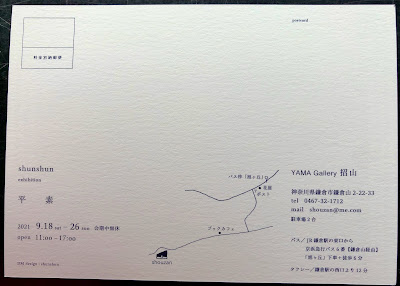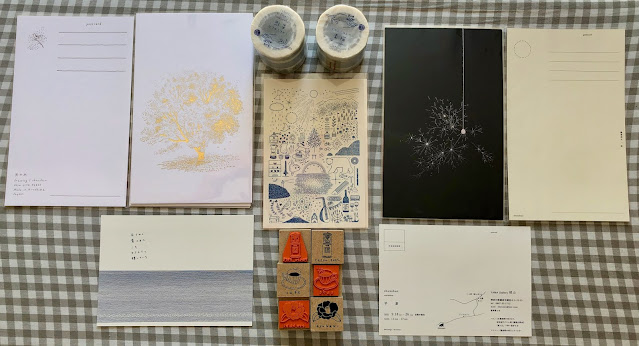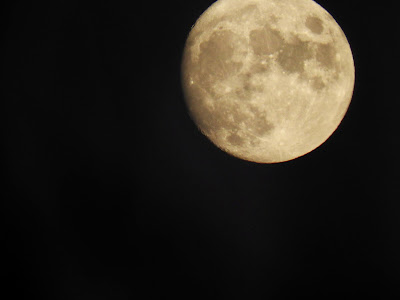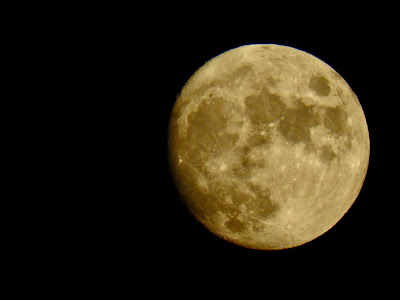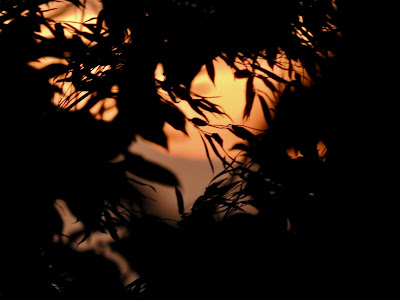目次 / Contents
1) 3冊の本 / Three Books
2) 会場へ / To Venue
3) 会場 / Venue
A. '
平素' /
'Heiso' : 'Ordinary' B. サイン / Autographed
C. ギャラリーから / From Gallery
1) 3冊の本 / Three Books
そのセクションを書いているときに、イラストレイターの
しゅんしゅん (? ~)さんの個展が、鎌倉山の 'YAMA, Gallery 招山' であることを知りましたが詳細を忘れていました。
その以後、近くの 'ブックカフェ・"惣common" でDMを見つけ、会期が2021年9月18日〜26日にあることを知り、そのお店で、
『ツバキ文具店の鎌倉案内』を買いました。
'ブック・カフェcommon惣' 訪問について、下記。
コロナの影響で展覧会や他の方の個展へ行くことを控えています。
ですが、'YAMA, Gallery 招山' は、徒歩圏内なので、行くことができますので、しゅんしゅんさんの個展をとても楽しみにしていました。
夫Rは私よりも1日早く足を運び、会場を見て、しゅんしゅんさんとも少しお話をしたようでした。
翌日の今日、私は初めて会場へ行き、Rは2回目の訪問をしました。
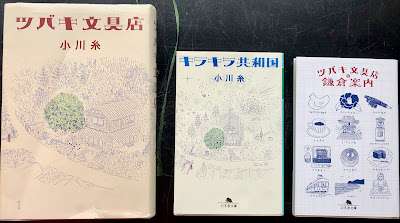 |
| 右から 『ツバキ文具店』(単行本 / 2016 / 幻冬舎) 『キラキラ共和国』(文庫本 / 2017) 『ツバキ文具店の鎌倉案内』(文庫本 / 2018) 『ツバキ文具店』『キラキラ共和国』 小川 糸 (オガワ イト/ 1973 ~ ) 著 イラストレーション : しゅんしゅん 『ツバキ文具店の鎌倉案内』 'ツバキ文具店' 著 (作者不明) イラストレーション : しゅんしゅん From right, "Tsubaki Stationery Shop" : "La papeterie Tsubaki" (Hardcover Book / 2016 / Gentosha) "Twinkle Twinkle Republic" ; "Kirakira Kyōwakoku" (Paper Book / 2017 / Gentosha) "Kamakura Guide in 'Tsubaki Stationery Shop'" (Paper Book / 2018 / Gentosha) "Tsubaki Stationery Shop" and "Twinkle Twinkle Republic" by Ito Ogawa (1973 ~) Illustration : Shun Shun (? ~) "Kamakura Guide in 'Tsubaki Stationery Shop'" by 'Tsubaki Stationery Shop (unknown) Illustration : Shun Shun (? ~) |
Three Books
Recently, I posted my impressions of "Tsubaki Stationery Shop" :
"La papeterie Tsubaki" and "Twinkle Twinkle Republic" ; "Kirakira Kyōwakoku" on my blog, below.
While writing that section, I found that an illustrator, Shun Shun's Exhibition would be held in 'YAMA, Gallery Shouzan', Kamakurayama but I forgot the details.
After that, I found Invitation Cards in our nearby Book Cafe ・
"So common", the Exhibition time : 18th to 26th of September, 2021 and bought a book, " Kamakura Guide in 'Tsubaki Stationery Shop' ".
About the visit to the Cafe, below.
Due to the influence of Corona, we are refraining from going to exhibitions and solo exhibitions by other people.
However, since 'YAMA, Gallery Shouzan' is within walking distance,
I can go there, so I was very much looking forward to Shun Shun's Exhibition.
My husband R went one day earlier than I did, he looked at the venue, and seemed to talk a little with Shun Shun.
The next day today, I went to the venue for the first time and R made a second visit.
ちなみに、私は、2015年: '招山ギャラリー・由比ヶ浜'
(現、'招山 雪の下') で、
個展:"Coonie's Space Quest in Kamakura, 2015"
を開きました。
その時以来、招山ギャラリーさんには親しみを感じています。
また、ギャラリーは、七里ヶ浜の西友スーパーマーケットへの道の
途中にあり、私達の散歩道上でもあります。
By the way, in 2015, I had my Exhibition :
"Coonie's Space Quest in Kamakura, 2015"
in 'Shouzan Gallery, Yuigahama (now, 'Gallery Shouzan Yukinoshita').
Since that time, I have been familiar with Shouzan Gallery.
Also, the Gallery is on our way to Seiyu supermarket in Shichirigahama and it is on our walking route.
"Coonie's Space Quest in Kamakura, 2015" については下記。
About "Coonie's Space Quest in Kamakura, 2015", below.
⬇︎
2) 会場へ / To Venue
 |
| 'YAMA, Gallery 招山' 素敵な建物です。 'YAMA, Gallery Shouzan' It's a lovely building. |
 |
ドア前 / In Front of Door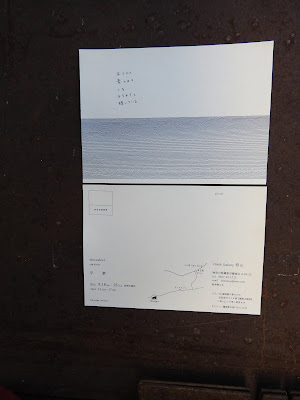 |
 |
| '招山'のロゴがアートです。 The logo of "Shouzan" is art. |
3) 会場 / Venue
A. '平素' / 'Heiso': 'Ordinary'
作品は、リトグラフもしくはエッチングの版画作品かと思いましたが、全て藍色のボールペンで描かれた手描き作品でした。
テーマの平素 (ヘイソ) は、
『平 (ヤス) らかで
素 (ス) の日々
こそ
キラキラと
輝いている』
と言うアイディアに基づいているのが、会場の入り口で明らかにされていました。
私はこのアイディアに近いものを最近目にしたと思いました....
どこでだったか?
いつであったか?
後になって、恵比寿アトレのポスターのテーマ":"今日もハレの日" であったことに気がつきました。
恵比寿アトレのポスターについては下記。
日本語には、晴れの日:特別な一日であることが含まれています。
Wikiより引用。
"もともとハレとは、折り目・節目を指す概念である。
ハレの語源は「晴れ」であり、「晴れの舞台」(=生涯に一度ほどの大事な場面)、「晴れ着」(=折り目・節目の儀礼で着用する衣服)などの言い回しで使用されている。
~~
また、現代では単に天気が良いことを「晴れ」というが、江戸時代まで遡ると、長雨が続いた後に天気が回復し、晴れ間がさしたような節目に当たる日についてのみ「晴れ」と記した記録がある。"
表現は、'平素' と 'ハレ' は両極ですが、個展の '平素' とポスターの
'ハレ' に流れているものは同じに感じます。
毎日を穏やかに大切に生きることがその日を特別にします。
平凡に見える毎日が何かの発見があれば、ハレの日、特別な日になります。
両者の考え方とも、毎日が特別なのだと言うことです。
しゅんしゅんさんに初めてお会いしましたし、生の作品を見るのも初めてでした。
彼の絵は、淡々としつつも表情がある、丁寧なラインで構成されています。
一本一本がテーマをなぞっています。
絵には、アキの空間が美しく残されています。
私は、その空間は見る側のイメージが広がるようにあるのだと理解しました。
海を見ていると心が広がってゆくように、彼の絵の中に心が遊びにゆくのです。
作家本人のお人柄も穏やかで、相手を好む好まざるをあまりせず、受け入れる懐の深さを感じました。
そしてふんわりした雰囲気の中で、話し手を観察する冷静さもお持ちのようでした。
会場は、近頃では珍しく、写真撮影禁止でしたので、ここに彼の絵を載せることができず残念です。
彼の通常のメインの仕事であるイラストレーションは媒体を通して人の目に触れます。
なので、それに比べるとプライベートな印象がある個展会場では、その場だけの、ライヴの空間を大切にするべく、写真撮影禁止にしたのではないかと推測します。
 |
| 入り口付近 個展のテーマ:'平素' の由来が展示されています。 入り口付近のみ撮影可でした。 Near Entrance The explanation of exhibition theme : 'Heiso' : 'Ordinary' is displayed. It was only allowed to photograph near the entrance corner.  |
'Heiso' : 'Ordinary'
I thought the works were lithographs or etching print works, but they were all a hand-painted work drawn with an indigo roller-ball pen.
The theme is 'Heiso' which means 'Ordinary', 'Usually' in Japanese.
The origin of the exhibition theme : 'Heiso' is explained at entrance,
"The days of ordinary and pure shine very brilliantly."
(I translated this by myself, so it may be different from Shun Shun's thought.)
I thought I recently saw something close to this idea ...
Where was it?
When was it?
Later, I realized that the theme of the poster for Ebisu station building, atré was "It's sunnyday today" : "Kyou mo Hare no Hi : 今日もハレの日".
About the poster of Ebisu atre is below.
In Japanese may include 'sunnyday' : 'Hare no Hi' as a special day.
According to Japanese Wiki, (translated by me)
"Originally, Hare: ハレ is a concept that refers to each stage (juncture) and turning point in life.
The etymology of Hare is "sunny", and it is used in phrases such as 'Haregi'; 'Hare-clothes' ; 'Big Moment' ( important scene in a lifetime) and often wearing "Formal Clothing : Gala Dress" as a courtesy.
~~
Also, in modern times, good weather is simply called 'sunny: Hare', but as far back as the Edo period, there is a record that when the weather recovered after long rains, and only the days when the weather hits a turning point like a sunny day are described as 'Hare' "
The expressions used, 'Ordinary' and 'Hare', are opposites, but what is flowing there : the Exhibition's 'Ordinary' and the poster's 'Hare', feel the same.
Living calmly and cherishing each day makes that day special.
Even if it looks mediocre every day and you find something, it can be a special day.
Both ideas are that every day is special.
It was my first time to meet Shun Shun, and it was also my first time to see his actual works.
His drawings are made up of polite lines that are plain yet expressive.
Each line traces the theme.
The empty spaces are beautifully left in the drawings.
I understood that the empty space was designed to expand the image of the viewer.
Just as my spirit expands when I look at the sea, my spirit goes to play in his drawings.
The personality of the illustrator himself was also calm, and I felt that he is able to accept people, not choosing whether he liked the other person or not.
He also seemed to keep his observing of people cool, with his atmosphere of soft and calmness.
It's a pity that I couldn't show his works here, because, rarely these days, photography was prohibited in the venue.
His normal main work, illustrations, are visible through the medium.
Therefore, I presume that photography was not allowed in the exhibition, which gives a more private impression than illustration works, in order to cherish the live space only there, on the spot.
B. サイン / Autographed
来場者の方がサインをしてもらっていました。
私もしゅんしゅんさんのサインが欲しくて、会場で展示されていた本を買ってそれにサインを頂こうかと思いました。
ですが、個展会場では本は販売されていませんでした。
DMにサインを私とRにそれぞれしていただきました。
"惣common" まで戻って、本を購入して来ようと思いましたが、
"惣common" では基本的に同じ本は置かず、1冊のみの販売という方針で、ここでも手に入りませんでした。
結局、一度自宅に戻り、本を手にし、再び会場へゆき、本にサインをいただきました。
 |
| 私へのサイン 景色の絵も描かれています。 A picture of the scenery is also drawn. |
Autographed
The visitor could get his autograph.
I also wanted his autograph, so I thought I would buy books exhibited in the venue and get his autographs.
However, the books were not sold in the exhibition.
He gave his autographs to me and R respectively on invitation cards.
I thought I would go back to "So common" and buy books, but in
"So common" they basically they don't have the same book and only sell one copy, so I couldn't buy it there either.
After all, I returned home, picked up my book, went to the venue again, and got the book autographed.
C. ギャラリーから / From Gallery
 |
| ギャラリーからの景色 相模湾と七里ヶ浜住宅街が一望できます。 View From Gallery You can overlook Sagami Bay and Shichirigahama residential area. |
しゅんしゅんさんの作品とギャラリーの海側の景色とが非常に合っていました。
特に、海側の壁には海を描いた大きな作品が展示され、その水平線と実際にギャラリーから見える水平線が一致し、素敵なレイアウトでした。
ギャラリーの壁の中心部には、小作品群がフランス製の額 (しかもアンティークだったように記憶しています)にはめられ、展示されていました。
その部分だけ独特の雰囲気が醸し出されていました。
丸い額の作品は、ブックカフェ・"惣common"さんが購入しました。
個展後、"惣common"の店内に展示されるとカフェの方から聞きました。
カフェに行けば、いつでもしゅんしゅんさんの作品が見られるのです!
 |
| ギャラリーからの景色 / View From Gallery |
From Gallery
Shun Shun's works and the view from the Gallery on the sea side matched very well.
In particular, his large work depicting the sea is exhibited on the wall on the sea side, and the horizon of the work and the horizon actually seen from the Gallery matched, and the layout was wonderful.
In the centre of the gallery wall, a group of small works were displayed in French frames (and I remember they are antique).
That area created its own unique atmosphere.
The work with a round frame was purchased by the Book Cafe "So common".
I heard from the cafe that after the Exhibition, it will be displayed in "So common".
If you go to the cafe, you can always see Shun Shun's work!
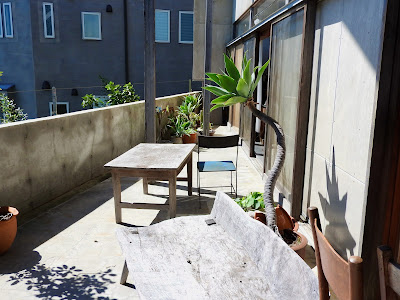 |
| ギャラリーのベランダ Gallery Veranda |



